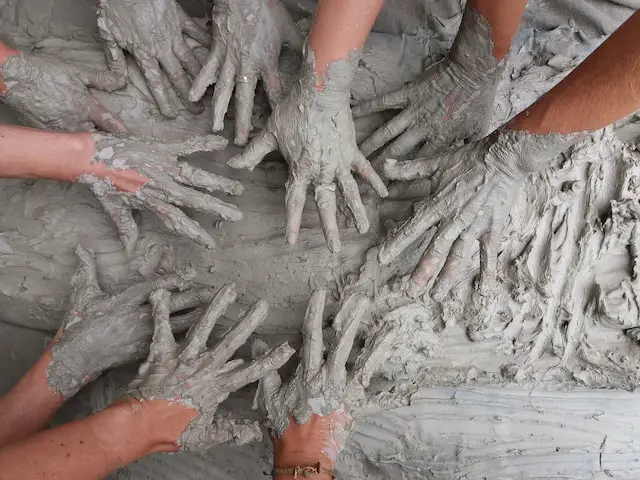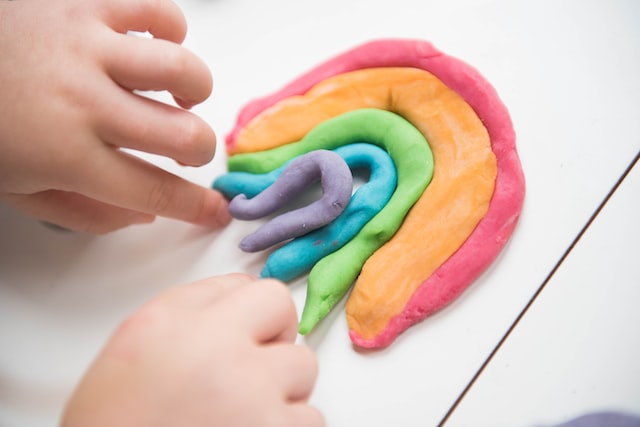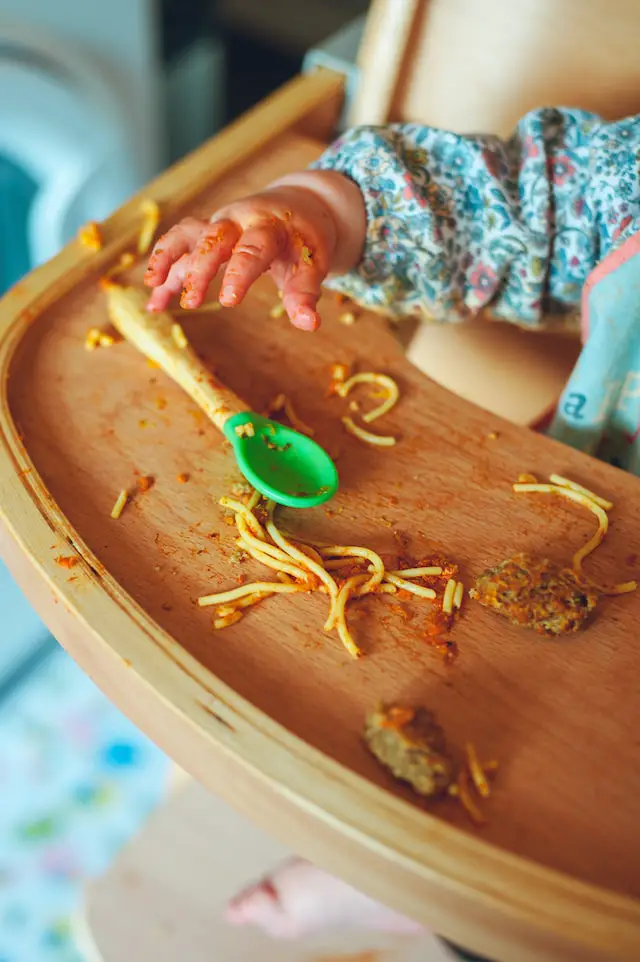Many parents cringe at the thought of giving their kids messy play activities to do. Playing with slime or clay sounds fun to the kids, but who cleans up the mess? Scooping and mixing means spilling and sweeping. A painting project sounds like a recipe for splatter. Often that’s the end of the debate. We tell our kids not to get dirty or make a mess. We opt for keeping their clothes neat and clean.
But there’s more to messy play than meets the eye.
Benefits of Messy Play
Messy play, also known as sensory play, involves children exploring a variety of textures with their senses, especially their sense of touch. It is a play-based activity that allows kids to discover ways to use and manipulate tactile media with their hands and fingers.

Messy play is an essential part of early development. Babies, toddlers, preschoolers, and early elementary students benefit from unstructured play with various tactile media. In addition, research shows that messy play is crucial for children to develop, explore, and learn.
Promoting messy play is a valuable learning experience. Children develop creativity by manipulating, molding, feeling, and shaping materials. The play is free, unstructured, and open-ended. It is focused on something other than producing a finished project. Instead, children try, test, and analyze their creations.
Most children enjoy messy play. They love to knead, scoop, pour, squeeze, touch, smell, and mix different materials. By participating in messy play, kids develop hand-eye coordination and use small hand muscles. In addition, playing with a variety of materials and consistencies leads to exceptional fine motor development.

Kneading and molding playdough may sound simple, but these activities accelerate sensory development. Messy play helps grow and strengthen neural connections, which leads to the ability to perform more complicated tasks. It also provides many opportunities for speaking, describing, and sharing new ideas, thus expanding language and communication skills. In the process, children build confidence, focus, and curiosity.
Also, is your kid a picky eater? Again, sensory play exposes kids to a wide spectrum of textures and mediums, which can translate to a willingness to try a greater variety of food.

Lack of Sensory Play Has Adverse Effects
Neglecting adequate messy play opportunities in childhood might contribute to learning and emotional difficulties. For example, children might present fine motor control challenges evidenced by decreased hand strength and poor ability to control and hold small items such as crayons. In addition, some children show tactile defensiveness and become uncomfortable with simple daily tasks like touching glue or paint during an art project. Other children might avoid new foods, become picky eaters, and refuse food based on appearance before tasting it.
Summary
As parents and educators, let’s encourage our kids to explore, create, play, and grow. Messy play activities are fun and motivating learning opportunities for children 0 to 10. This enjoyable play promotes sensory, fine motor, emotional, academic, and language growth. So it’s time to have fun making a mess! Please look at ideas below.

Messy Play Ideas
Please read below for some messy play ideas for home and the classroom. Always keep safety in mind when working with different materials and younger children. Watch for choking hazards, check potentially harmful chemicals, and consider allergies.
Messy Play Ideas – sensory table, bin, or tray.
- Water
- Ice cubes (add food coloring or lemon/lime juice)
- Glue/glitter glue
- Sand
- Playdough (add glitter, spices, buttons, feathers, beads, etc.) and playdough tools
- Kinetic sand/moon sand
- Slime/puffy slime (glue & borax)
- Shaving cream
- Finger paint/puffy paint (glue & shaving cream & food coloring, or paint)
- Bubbles
- Water beads
- Clay
- Fake snow
- Cloud dough (flour & baby oil)
- Oobleck (water & corn starch)
- Soap foam
- Hair gel
- Bird seeds
- Dry corn
- Paper Mache

Messy Play Ideas in the Kitchen
- Playing in whip cream
- Playing in pudding
- Playing in jello
- Kneading dough (pizza, cookie)
- Mix cooking ingredients
- Cooked spaghetti
- Rice, colored rice
- Flour
- Coffee grinds
- Making cookies
- Mud pie (flour, cocoa, and water)
- Digging out pumpkin guts
- Playing with cooked potatoes
- Rolling meatballs
- Homemade playdough
Messy Play Ideas Outdoors
- Digging holes/digging tools
- Making mud pies — playing in wet sand
- Water balloons
- Playing in the fall leaves
- Playing in winter snow
- Playing in grass
- Collect nature items (mix rocks, flowers, sticks, leaves, dirt, etc.)
- Texture scavenger hunt
If you enjoyed this article, please share it with a friend!



0 Comments